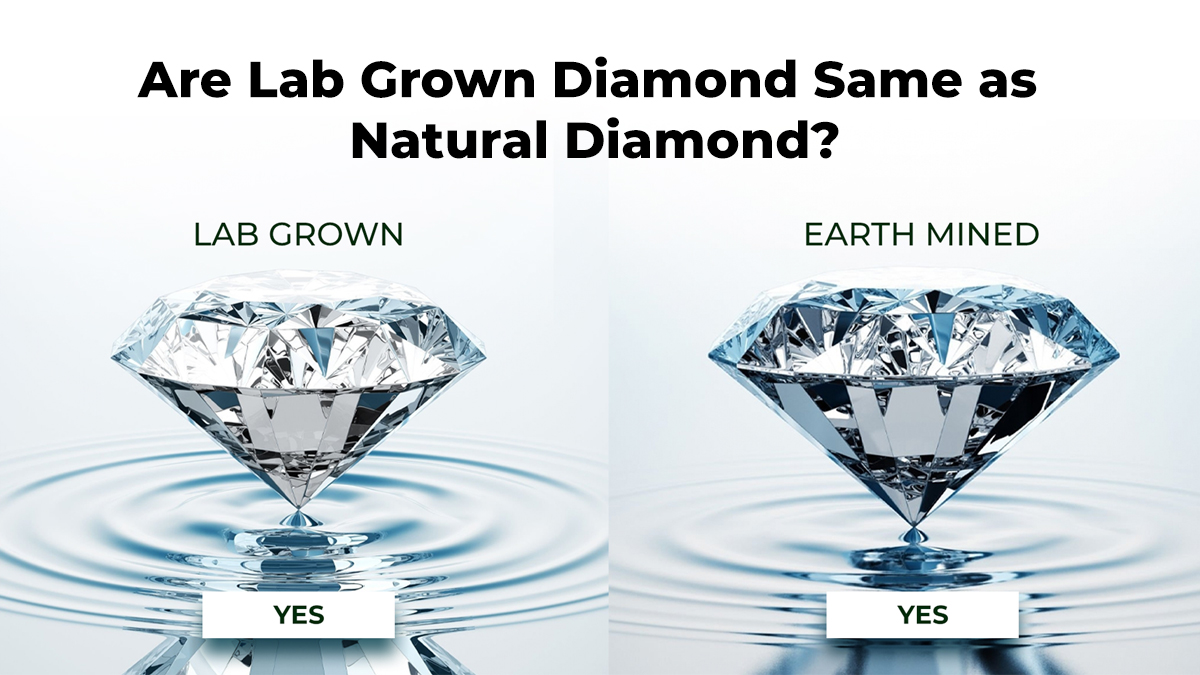Diamonds were first used as diamond engagement rings during the Renaissance Period. They were regarded to be a wonderful gift that signified the ultimate gift of love. This trend began in 1477, when Archduke Maximillian presented Mary of Burgundy a diamond engagement ring. This was a common trend exclusively among royalty and the very wealthy.
Diamond is a very hard substance that may be used to cut other materials such as glass. This stone is popular for wedding and engagement rings among those who adore it. This stone, on the other hand, can be used in a wide range of fine jewelry.
Diamond is a naturally forming pure crystal of carbon mineral valued for its breathtaking brilliance and hardness. It is the hardest naturally formed substance. On the Mohs scale, which measures a mineral's resistance to scratching, it has a mineral hardness score of 10.
The production of lab-grown diamonds has sparked an increasing debate. Is this man-made diamond truly the same as a natural diamond? Diamonds come in a range of colors, sizes and shapes from classic brilliant diamonds to fancy colored diamonds.
Lab grown diamonds are easily available it can be produced in any diamond shapes and colored gems at affordable prices.
But natural diamonds are rare and a bit costly than lab created diamond as it requires mining. In this article, today We will look at the similarities and differences between natural and lab made diamonds.
What is a Natural Diamond?
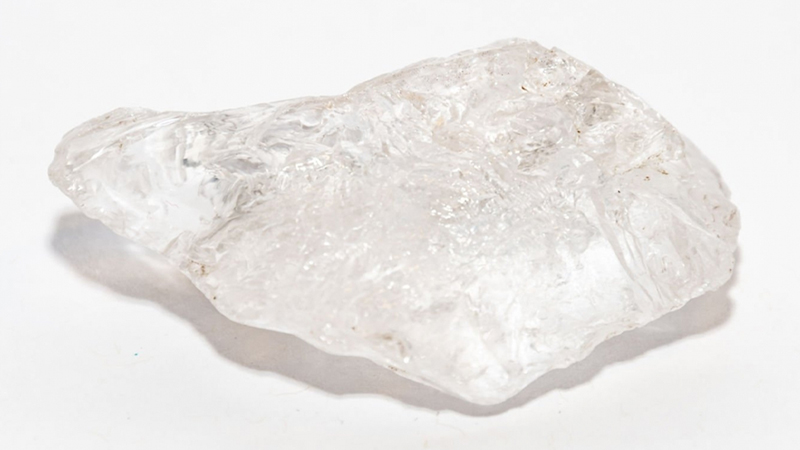
A Natural diamond is a precious gemstone. It is made from pure carbon. This carbon is formed about 100 miles beneath the earth's surface.
Extreme temperature and pressure exist in this area. It is known as the hardest natural substance on the earth. It is impossible to determine the exact age of diamonds. However, geologists can form an estimate by looking at the inclusions of specific minerals.
This inclusions in the diamond that they were derived from subducted crust. The diamond is formed in underground conditions.
It then travels to the surface via molten rock. Here it is mined, refined, and turned into jewelry. The jewelry is used for both aesthetic and industrial purposes.
What is Lab Grown Diamond?
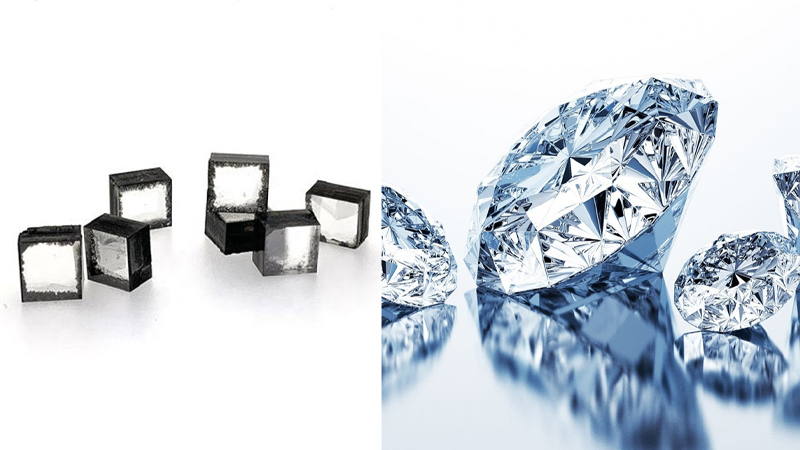
Lab grown diamonds are created in a laboratory. Advanced technologies are used to mimic the conditions in which natural diamonds form in the earth's surface. Synthetically produced diamonds have the same characteristics as those found in nature, including chemical make-up, physical structure and visual qualities. Lab grown diamonds are also known as man-made diamond, synthetic diamonds or lab created diamond.
Lab grown diamonds are created by two methods that are High pressure and high temperature (HPHT) and chemical vapor deposition (CVD). Typically, lab-grown diamonds begin with a little lab diamond, similar to a seed.
The seeds are placed in a plasma reactor. This enclosed space is used to cultivate them by chemical vapor deposition. For HPHT growing, a massive mechanical press is used.
Mechanical presses are used to simulate the conditions in which diamonds are formed in nature. This involves applying intense pressure and heat to carbon while a diamond seed is present. Seeds act as a blueprint for a carbon lattice. This lattice then grows by adding layers over several days.
Are Lab Grown Diamonds Graded and Certified Like Natural Diamonds?

Lab grown diamonds are real diamonds as natural diamonds they have the same chemical and physical properties. Lab grown diamonds test as real diamonds on a diamond tester. This is because they are composed of crystallized carbon, just like natural diamonds.
Lab-grown diamonds are certified with a detailed report of their characteristics, such as cut, color, clarity, carat weight, and fluorescence. Understanding these details is important for making an informed purchase. Lab grown diamonds are currently graded by four organizations:
- 1. The International Gemological Institute (IGI).
- 2. The Gemological Institute of America (GIA).
- 3. The Gem Certification and Assurance Lab (GCAL).
- 4. The American Gem Society (AGS).
The Pros and Cons of Lab Grown vs Natural Diamonds?
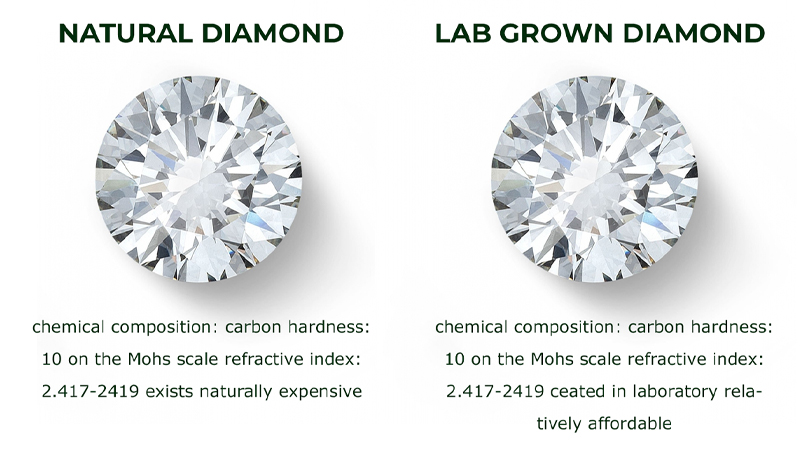
1. Lab-grown diamonds are basically identical to natural diamonds, in terms of their physical and chemical properties. Lab created diamonds have the same crystal structure, chemical composition, and optical properties as naturally mined diamonds. Even experienced gemologists can have difficulty telling the difference between lab-grown diamonds and natural diamonds without specialized equipment.
2. Although, there are some differences between lab-grown diamonds and natural diamonds.
One of the most significant differences is their origin. Natural diamonds form deep below Earth's surface over billions of years. Lab-grown diamonds, however, are created using advanced technology in a laboratory in a few weeks or months.
Natural diamonds often have unique inclusions and imperfections. Lab-grown diamonds, however, are usually more consistent in terms of brilliance and appearance.
3. Another difference between lab-grown and natural diamonds is their value. Lab-grown diamonds are generally 50-60% less expensive than natural diamonds, which can make them a more affordable option. The price of lab-grown diamonds is affected by size, color, and clarity, similar to natural diamonds. These factors have an impact on the cost.
4. Eventually, there is the ethical and environmental aspect to consider. Natural diamond mining has a major environmental impact. This impact can include land disturbance, water resources, air quality, soil quality, wildlife, and climate changes. Lab-grown diamonds, on the other hand, are generally regarded as a more ethical and sustainable option.
5. Natural diamonds are rare and one-of-a-kind, whereas lab-grown diamonds can be mass-produced.
Natural and lab-grown diamonds can both be certified by gemological laboratories. Examples include the Gemological Institute of America (GIA) and International Gemological Institute (IGI). However, the certification process for each type of diamond varies.
A diamond report from the IGI can give an accurate account of a diamond's quality. This includes its cut, color, clarity and carat weight. These standards are based on international regulations.
Furthermore, the GIA, The Gemological Institute of America, accepts and certifies lab grown diamonds. GIA has created sophisticated technology that they use to screen and distinguish between natural diamonds and lab grown diamonds.
Conclusion
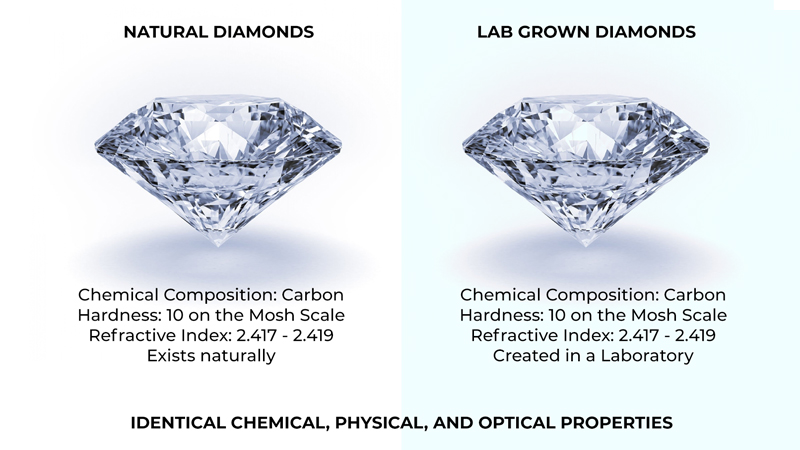
Finally, in terms of physical, chemical, and optical properties, lab-grown diamonds are very similar to naturally mined diamonds. It would be difficult to distinguish between a natural and a synthetic diamond if they were placed side by side. Without advanced equipment, even experienced jewelers and gemologists cannot determine the difference between lab-grown and natural diamonds.
Lab grown diamonds and mined diamonds have some differences. These differences are usually minor and do not affect the quality or value of the diamond.
There is a significant price difference between lab-grown and natural diamonds. Although prices fluctuate, lab-grown diamonds are approximately 30% - 40% less expensive than natural diamonds. The price difference between lab-grown and natural diamonds is clear.
It is a matter of personal preference whether you opt for a natural diamond or a lab-grown diamond. However, it is essential to comprehend the distinctions between the two before making a decision.

